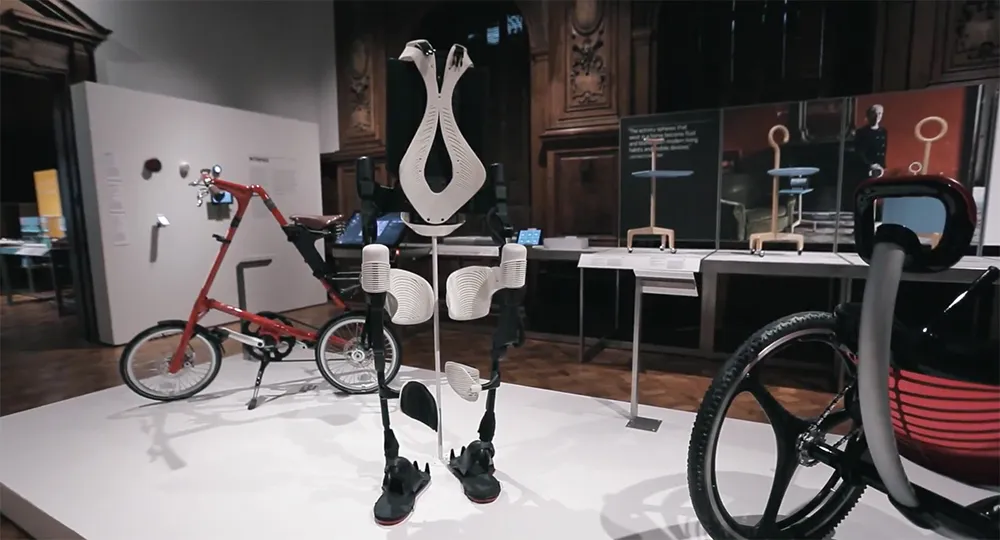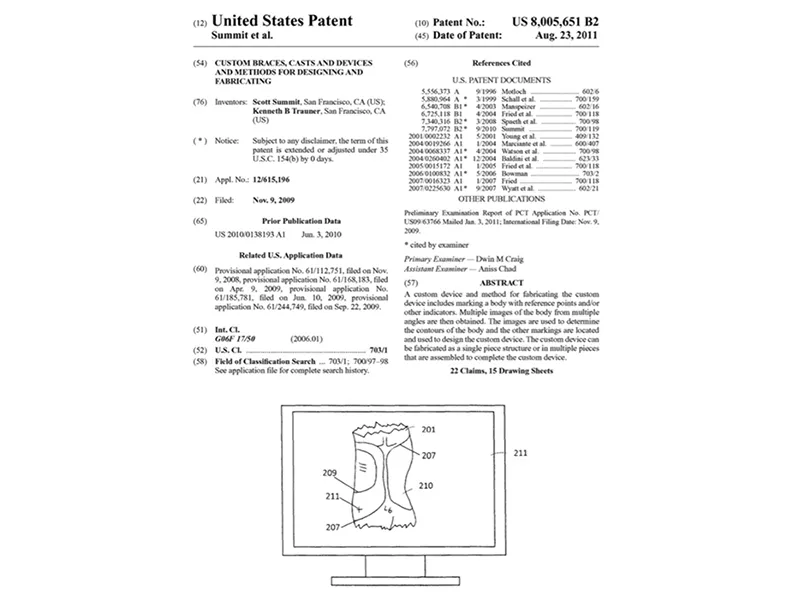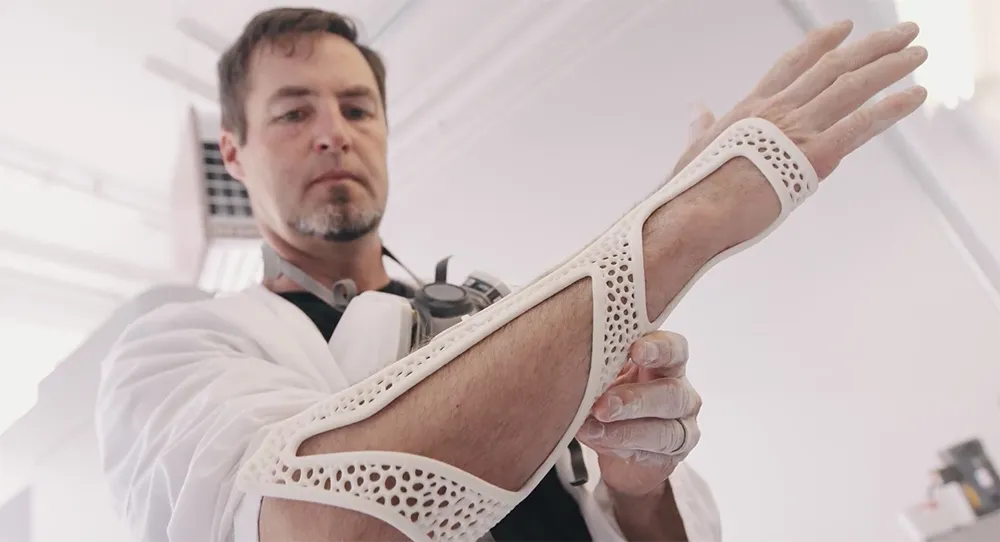This Bionic Suit May Be the Future of Prosthetics
Inventor Scott Summit is personalizing medical devices through 3D printing
Doctors told Amanda Boxtel that she would never walk again after a tragic skiing accident left her paralyzed from the waist down. But 22 years after she lost use of her legs, Boxtel can now stand and walk with the aid of a robotic exoskeleton.
To use the suit, she shifts her weight, which activates sensors in the robot that trigger battery-powered motors to move her legs. The California-based company Ekso Bionics collaborated with Scott Summit, design director at 3D Systems, to ensure that the suit is more than a clunky robot awkwardly attached to her body.

Summit holds more than 20 patents related to medical devices, from prosthetic legs to braces for teenage girls with scoliosis, that take the shape of the person wearing them, making them more comfortable and more natural. Using 3D scanning and printing, he and his team took exact measurements of Boxtel's body and printed pieces, all rather quickly and cheaply, to connect the Ekso bionic suit to her body. The custom-fit Ekso exoskeleton was displayed at the Cooper Hewitt, Smithsonian Design Museum in an exhibition about user-centered design called “Beautiful Users.”
When did you start inventing?
I probably started inventing before I could walk. I think that's every kid's instinct, to just start inventing. We didn't have a TV, thankfully. I had a lot of shop tools that came from my granddad, who was an inventor and a patent attorney. I had these beautiful tools from the turn of the century. It was pretty great to have a garage full of machine tools and wood tools. And so that's what I did for fun—play with metal, play with wood, play with any materials and just see what I could create.
Why did you move away from traditional industrial design?
I lost interest in mass production years ago, because I found that it is a bit de-personal. I wasn't designing for a person. I was designing for people of a certain nature or of a certain purchasing profile. I found that a little bit disheartening, because that's not why I went into design. I went into design to design a thing for a person.
What are some of the advantages of using 3D printing in the design process?
Once you have 3D printing in your process, you realize that you can print constantly. Every idea that comes up in your head, you can print out very rapidly. Our machines are running around the clock, and we constantly have new products that are ending up on our tables. This becomes a really valuable part of the iterative cycle, because you're constantly designing, making little changes, prototyping again and making more changes. It's a constant flow. It's exciting.

What got you interested in the idea of making medical technology personal?
I was really drawn to medicine because it's so full of challenges. It's so full of real human need that I've never been interested in designing another watch or another cell phone. When you're in medicine, you're helping people when they're at their most vulnerable, and when the difference between a well-designed product and a poorly-designed product can really change the quality of somebody's life. You have the opportunity to give them a better outlook or a better quality of every minute of their day if you design the product well. I like being able to use design as a vehicle to impact people in that way.
What is it like to see the Ekso bionic suit in action?
It is pretty amazing, because you see somebody who hasn't left a wheelchair in years stand up and then start walking. Sometimes they compete to see how many steps they can take. Amanda Boxtel, who we work with, has taken over 100,000 steps and that is a great source of pride to her. It really speaks to the freedom that it has afforded her. When you look at the exoskeletal robot, you realize that this is just the beginning of something that is going to get very exciting. Right now, it is limited in what it can do, but fast-forward ten years and it's going to be a pretty powerful thing. It will maybe replace the wheel chair one day as the source of motion for a paralyzed person.

Have you ever personally experienced the benefits of the custom medical devices you create?
I had a fortunate break, you could say, last October. I tore the TFC ligament in my wrist. I needed some elective surgery, and this was the ideal opportunity to experiment, because it's very hard to experiment on someone else. You don't like to subject anyone else to risk, but I don't mind doing it to myself, so we 3D scanned my arm and 3D printed the post-operative brace that I would where after surgery. My doctor was very dubious at first, because he had never seen anything like this. He was cautious, as you kind of want your doctor to be, but I wore it immediately after surgery. Because the cast was based on a scan of my arm, it fit perfectly and it was comfortable. What it led to was a much, much better quality of life while I was recovering.
Why do you invent?
I think every project and every activity seems to contribute to an overall adventure. I invent because it's fun, it's an adventure, it's exciting, it's a rush. I love not knowing on the onset of a project what I'm going to get days or weeks or months later. This is a way to keep your internal five-year-old always active.
/https://tf-cmsv2-smithsonianmag-media.s3.amazonaws.com/accounts/headshot/DSC_0154.JPG.jpeg)
/https://tf-cmsv2-smithsonianmag-media.s3.amazonaws.com/accounts/headshot/DSC_0154.JPG.jpeg)